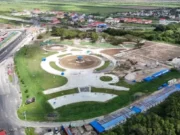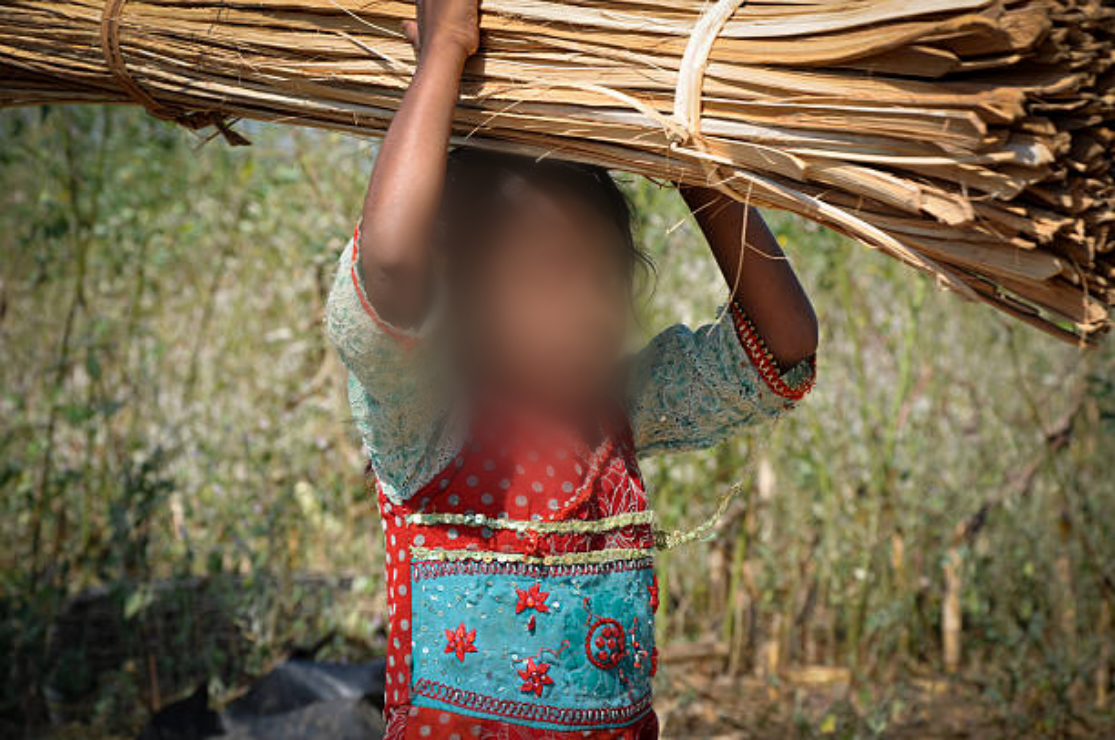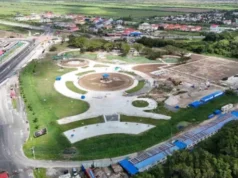By Sueann Wickham
Child labour has long been a persistent issue in Guyana, where little boys and girls can be seen vending on seawalls, working on farms, and even in mining areas. While some may argue that these practices can instill a sense of responsibility at a tender age, the stark reality is that too many children in Guyana are being subjected to exploitative work conditions. These circumstances not only rob them of their innocence but also deprive them of the education they desperately need.
With this article, Guyana Standard aims to shed light on the pervasive issue of child labour and delve into its devastating effects on children who have a right to an education.
In Guyana, child labour is defined as any form of work undertaken by individuals below the age of 15. The Ministry of Labour plays a pivotal role in addressing child labour concerns, overseeing the enforcement of labour laws, conducting inspections, and collaborating with various stakeholders to combat this grave violation of children’s rights.
Despite the nation’s recent acquisition of oil wealth, which has helped fund progressive initiatives in various areas, child labour continues to persist in Guyana, often concealed in plain sight. Many children find themselves robbed of their innocence and dreams as they are compelled to enter the workforce to support their economically disadvantaged families.
While no official report on child labour in the past year has been obtained by this publication, it is crucial to acknowledge that in 2021, the Bureau of International Labour Affairs, a division of the United States Department of Labour reported minimal progress made by Guyana in eliminating the worst forms of child labour.
The report highlighted that although the government had increased the number of labour officers from 17 to 22, surpassing the International Labor Organization’s recommendation of 19 inspectors, children in Guyana continued to endure the worst forms of child labour. These forms included commercial sexual exploitation, sometimes as a result of human trafficking. The report also indicated that law enforcement agencies lacked adequate resources to conduct inspections in remote areas, often facing challenges related to transportation and accommodation.
Our research also found that among the hazardous activities in which children in Guyana are engaged, are construction, farming, and welding. Moreover, it was found that the worst forms of child labour, include commercial sexual exploitation, marijuana cultivation, and smuggling of drugs, weapons, and goods.

Furthermore, the Bureau’s 2021 report had noted that “Children in Guyana are subjected to commercial sexual exploitation in Georgetown and the country’s interior. There are reports of young girls in mining communities being subjected to commercial sexual exploitation as a result of human trafficking. In addition, children are engaged in informal, small-scale mining in which they wash gold, operate dangerous machinery, and are exposed to hazardous chemicals.”
Further, it was found that there are gaps in Guyana’s legal framework to effectively protect children from the worst forms of child labour, including the insufficient prohibition of commercial sexual exploitation of children.
While Guyana prohibits the employment of children under the age of 15, with an exception for work in family businesses, the Employment of Young Persons and Children Act falls short of international standards regarding hazardous work. For instance, it permits children between the ages of 16 and 17 to engage in night work in industrial activities without adequately safeguarding their health, safety, or morals.
It is important for readers to know that while the Ministry of Labour primarily investigates reports of child labour, there are other ministries and agencies that offer support. Routine labour inspections are conducted by the ministry and children identified during these inspections are referred to the Countering Trafficking in Persons Unit (C-TIP) and the Childcare and Protection Agency under the Ministry of Human Services and Social Security (MHSSS).
The Guyana Police Force (GPF) is responsible for enforcing criminal laws related to the worst forms of child labour, working in consultation with the Director of Public Prosecutions, Ministry of Home Affairs (MOHA), Ministry of Human Services, Ministry of Education, and Ministry of Indigenous Peoples’ Affairs, depending on the circumstances of each case.
Child labour in Guyana without question inflicts severe and detrimental effects on the education of its victims. The burden of work responsibilities placed upon these children creates significant barriers that hinder their access to education and impede their academic progress.
The consequences of child labour on their educational journey are also profound and multifaceted. Firstly, the long working hours and physical exhaustion associated with child labour leave these children with limited time and energy to dedicate to their studies. The demanding nature of their work, often in hazardous conditions, leaves them drained and unable to fully engage in their educational pursuits. As a result, they struggle to keep up with their schoolwork and fall behind their peers. Some even end up completely dropping out of school to work full-time.
Moreover, the economic pressure and responsibilities placed on child labourers often force them to prioritize work over education. Many of these children are even compelled to contribute to their family’s income and survival, leaving little room for attending school regularly or completing assignments. They eventually become trapped in a cycle where work becomes their primary focus, thereby eroding their chances of obtaining a quality education.
Returning to the Bureau’s report, quite a few recommendations to address the issue of child labour in Guyana were given. These included the government making efforts to ensure that children are not prevented from attending school due to transportation costs or lack of infrastructure, and that there should be an increase in the number of qualified teachers, particularly in rural and interior areas. The Bureau also called for the publishing of information on the funding allocated to the Labour Inspectorate and the number of child labour violations for which penalties were imposed and collected.
Additionally, it called for ensuring that the labour inspectorate receives sufficient resources to monitor remote areas, particularly the interior, where child labour is most prevalent. It said too that the Commission on the Rights of the Child should be permitted to join and actively participate in the Inter-Ministerial Taskforce on Combatting Trafficking in Persons.
Furthermore, the report stressed the importance of incorporating updates on activities carried out by the National Steering Committee on Child Labour. It recommended that strategies for eliminating and preventing child labour be included in the National Education Policy and the new 5-Year Strategic Plan for the Commission on the Rights of the Child.
These recommendations serve as a roadmap for Guyana to combat the pervasive issue of child labour and protect the rights of its children. It requires a collective effort from government agencies, civil society organizations, and international partners to enforce and strengthen legislation, provide resources for inspections, raise awareness, and promote access to quality education for all children in Guyana.
As the curtain is pulled on the hidden reality of child labour in Guyana, it becomes evident that urgent action is needed to break the chains that hold these young souls captive. In addition to addressing the issue of child labour, we must confront the uncomfortable topic of responsible family planning and the consequences of bringing children into the world without the means to support them. This aspect of the issue underscores the importance of raising awareness about proper contraceptive use and ensuring that individuals are equipped with the knowledge to make informed decisions regarding parenthood.
While delving into all the intricate parts of this matter is beyond the scope of this article, it is a topic that merits greater examination and will be explored further in a forthcoming edition.
Guyana Standard firmly believes that every child deserves the opportunity to experience the beauty of childhood; to thrive and receive an education untarnished by the burdens of adulthood.











